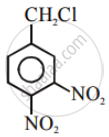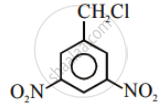Advertisements
Advertisements
Question
Racemisation occurs in ______.
Options
SN1 reaction
SN2 reaction
Neither SN1 nor SN2 reaction
SN2 reaction as well as SN1 reaction
Solution
Racemisation occurs in SN1 reaction.
Explanation:
A mixture containing two enantiomers in equal quantities will have zero optical rotation because the rotation caused by one isomer will be neutralised by the rotation caused by the other isomer. This type of mixture is known as a racemic mixture or racemic modification. Racemisation refers to the process of converting an enantiomer into a racemic mixture. Both retented and inverted products are generated during the SN1 reaction. Racemization happens as a result of the production of both d- and l- products.
APPEARS IN
RELATED QUESTIONS
Which alkyl halide from the following pair would you expect to react more rapidly by an SN2 mechanism? Explain your answer.
CH3CH2CH2CH2Br or \[\begin{array}{cc}
\ce{CH3CH2CHCH3}\\
\phantom{...}|\\
\phantom{....}\ce{Br}\
\end{array}\]
Arrange the compounds of the following set in order of reactivity towards SN2 displacement:
2-Bromo-2-methylbutane, 1-Bromopentane, 2-Bromopentane
Arrange the compounds of the following set in order of reactivity towards SN2 displacement:
1-Bromobutane, 1-Bromo-2, 2-dimethylpropane, 1-Bromo-2-methylbutane, 1-Bromo-3-methylbutane
What is the action of the following on ethyl bromide:
moist silver oxide
Which of the following reactions is an example of nucleophilic substitution reaction?
Racemic compound has ____________.
Among the following, the dissociation constant is highest for:
Which of the following undergoes nucleophilic substitution exclusively by SN1 mechanism?
Which of the compounds will react faster in SN1 reaction with the –OH ion?
\[\ce{CH3-CH2-Cl}\] or \[\ce{C6H5-CH2-Cl}\]
The decreasing order of reactivity of the following compounds towards nucleophilic substitution (SN2) is ______.




